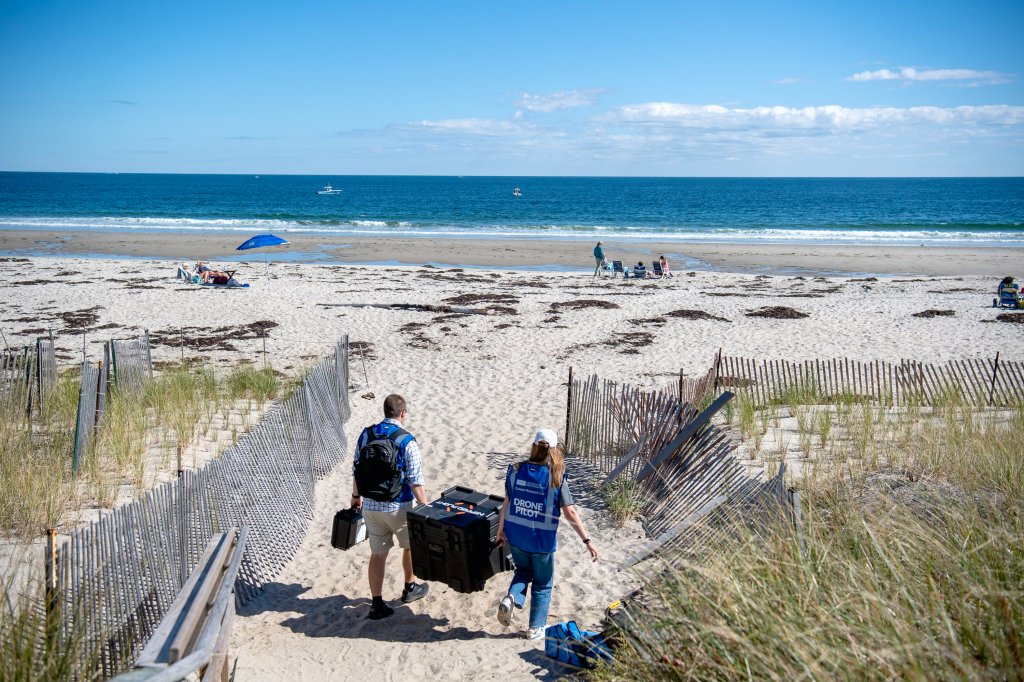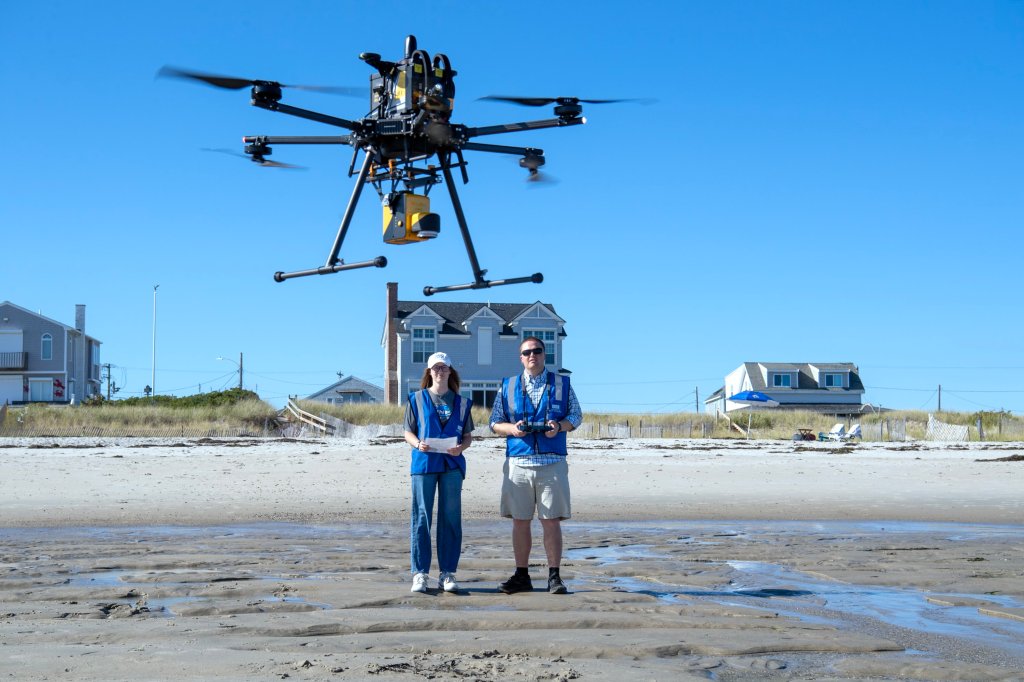
BIDDEFORD — Southern Maine lost more than a quarter of its coastal sand dunes in the historic 2024 winter storms that caused an estimated $70 million in damage from record-setting high water levels, according to a new study from the University of New England.
Less than half of the dunes at four beaches in Biddeford, Kennebunkport and Saco had come back at the end of last year’s seasonal growth cycle, when dunes are at their highest, according to research published Monday in Geomorphica, an earth sciences-based science journal.
“Coastal dunes serve as the first line of storm defense,” said assistant professor Will Kochtitzky, the report’s lead author. “We wanted to know what was lost in those storms, but also what came back naturally versus what came back with various levels of intervention.”
The UNE team is the first to publish research on the effect of the January 2024 storms, he said. The back-to-back storms caused surge and waves during a king tide — a high tide amplified by a new or full moon — that resulted in record-setting high water levels in southern Maine.
The research team found that dune area loss across the four shorelines ranged from 18% to 45% after the storms, according to the study. Only 10% to 50% of dune volume had been recovered by September 2024, when Maine’s dune building season ended for that year.
Coastal dunes always lose sand in the winter, when more frequent and intense storms and larger waves move sand into offshore sandbars. Calmer spring and summer waves push sediment back onto the shore, rebuilding the beach berms and adding sand to the dunes.
The UNE research team is still collecting data on how the dunes have recovered after two full growing cycles, Kochtitzky said. Preliminary results show there has been progress, but the dunes have not returned to pre-storm size. The dune grass that was planted has grown, he said, but has not spread.
Dunes not only provide a buffer for Maine’s sandy beaches, they also provide protection to high-value shoreline homes and coastal roads and serve as important wildlife habitat, including nesting sites for at-risk shorebirds like piping plovers, Kochtitzky said.

He showed off the project’s workhorse — a four-foot-wide, five-rotor drone that cost $80,000 — at Middle Beach in Biddeford on Friday. The drone flies about 150 feet above the dunes, but can still collect enough data in good weather to capture individual grains of sand.
Kochtitzky and upper level geographic information systems students used it and another small drone to carry cameras and sensors that measure the time it takes for reflected light pulses to bounce back up to a hovering drone. They use the information to build three-dimensional maps.
For the study, Kochtitzky and his students made about 100 passes over the four stretches of coast to measure the dunes, including before and after the storms and at the end of the 2024 summer growing season, he said. Each pass took a couple of hours. Processing all of the data took weeks.
The results showed that Middle Beach, which connects with Biddeford Pool and Fortunes Rocks beaches, lost 46% of the 2,550-meter-long combined dune system. It regained about 36% of that lost volume by September 2024, according to study results.
Results from the study — which the UNE Coastal Research Lab has posted online — found that homeowners who got a post-storm permit to use scraped beach sand to replenish their dunes and replanted them had regained more of their dunes than those who did nothing.
He said that is good news for nature-based beach recovery efforts.
The research is the kind of real-world experience that will help students like senior Johanna Birchem land a job at an engineering or environmental services firm. Plus, there’s no denying the coolness factor of being a licensed drone pilot, said Birchem, who is from Minnesota.
On Friday, a dozen Middle Beach dog walkers and runners stopped to ask Birchem and Kochtitzky about the drones during the hour-long research session.
“I fell in love with flying drones because it gives you such an unusual perspective on what is going on on the ground,” Birchem said. “That is a good reminder for people like me, who want to solve environmental problems for a living.”
Kochtitzky has shared the findings of the study with coastal communities struggling to protect coastal dunes from climate-fueled extreme weather and rising seas. Sea levels are projected to rise up to 9 feet by 2100, depending on emission rates, according to the Maine Climate Council.

We invite you to add your comments. We encourage a thoughtful exchange of ideas and information on this website. By joining the conversation, you are agreeing to our commenting policy and terms of use. More information is found on our FAQs. You can modify your screen name here.
Comments are managed by our staff during regular business hours Monday through Friday as well as limited hours on Saturday and Sunday. Comments held for moderation outside of those hours may take longer to approve.
Join the Conversation
Please sign into your CentralMaine.com account to participate in conversations below. If you do not have an account, you can register or subscribe. Questions? Please see our FAQs.